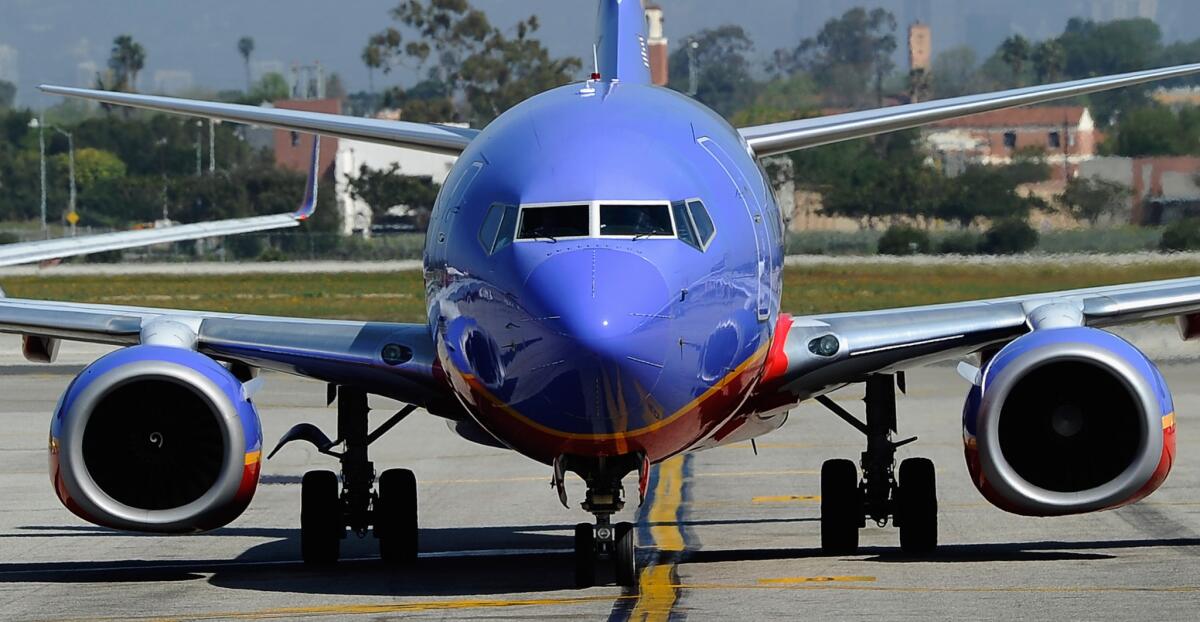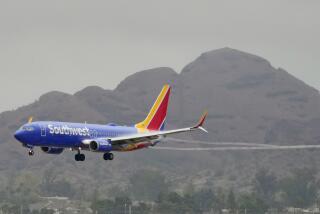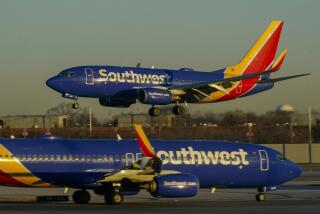The ‘Southwest Effect’ works on international flights, too

- Share via
For years, airline industry analysts have used the term “Southwest Effect” to describe how airfares offered by the nation’s major carriers decline after Southwest Airlines starts to compete with those airlines on specific domestic routes.
Now that the airline has started to serve international destinations, it seems that the same “Southwest Effect” extends to foreign routes, according to a study by Rick Seaney, chief executive of the travel website Farecompare.com.
Fares for flights to Mexico, Central America and the Caribbean dropped as much as 25% after Southwest joined the competition, the study found.
Seaney’s analysis found that certain routes to Mexico and Central America were also pushed down when ultra-low-cost carrier Spirit Airlines entered those markets.
“It appears that Southwest doesn’t have to be in the market in order for the so-called Southwest Effect to occur,” Seaney’s study concluded.
Follow me on Twitter: @hugomartin
ALSO
3 strategies to fund your child’s college education
Uber conquered taxis. Now it’s going after everything else
Ellen Pao’s next act targets Silicon Valley’s diversity problem
More to Read
Inside the business of entertainment
The Wide Shot brings you news, analysis and insights on everything from streaming wars to production — and what it all means for the future.
You may occasionally receive promotional content from the Los Angeles Times.











